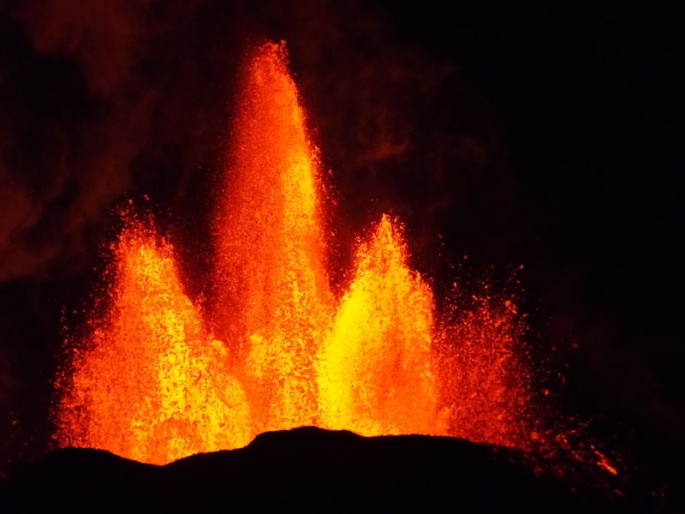A new study reveals how volcanic "fire fountains" caused by carbon monoxide gas, shaped the moon which is also similar to the geological features in Iceland today.
Scientists have conducted a new analysis using advanced technology on the contents of the green and orange glass beads that were found in the soil samples that were brought back from the moon during NASA's Apollo 15 and Apollo 17 lunar missions in the 1970s.
According to researcher Bruno Scaillet from the University of Orleans in France, these lunar volcanic glasses were first believed to be the by-product of fire fountain eruptions where a jet of basaltic heavy lava flowed from a vent that spattered droplets of lava which quickly formed into glass beads.
He explains this process as something similar to shaking a can of soda and then taking of its cap. On Earth, however, fire fountains are triggered by gas made from carbon dioxide or water.
However, this new analysis of the lunar volcanic glass beads reveals that there are concentrations of carbon and water that gradually decreased in the core of the beads that suggest a degassing event, according to researcher Alberto Saal of Brown University.
Follow-up studies that include computer simulation models reveal that these fire fountains on the moon were most likely fuelled by carbon monoxide gas. Saal adds that it was highly debated that it could be carbon monoxide, yet there was still no evidence at the time. Some say it could also be hydrogen however there is no geologic evidence of activity that there exists a fluid that is abundant in hydrogen, he says.
Researchers also reveal that the carbon concentrations discovered from the lunar melts are almost similar to basalts found on Earth that originate from eruptions under mid-ocean ridges.
Saal and his team have already suggested from prior studies that the Earth and its natural satellite possess similar concentrations of water including other volatiles and similar ratios of hydrogen isotopes as well.
This new study can now offer a better understanding about how the moon was formed where the major theory involves that the Earth collided into a cosmic object the size of Mars during the early formation of the solar system as the remnants formed together into the moon.
Saal says that this volatile evidence suggests that Earth's present volatiles have survived this major cosmic impact that became included in the accretion of the moon or those volatiles present on Earth and the moon now, originally come from a singular source or primitive meteorites.
This new study is published in the journal Nature Geoscience.



























